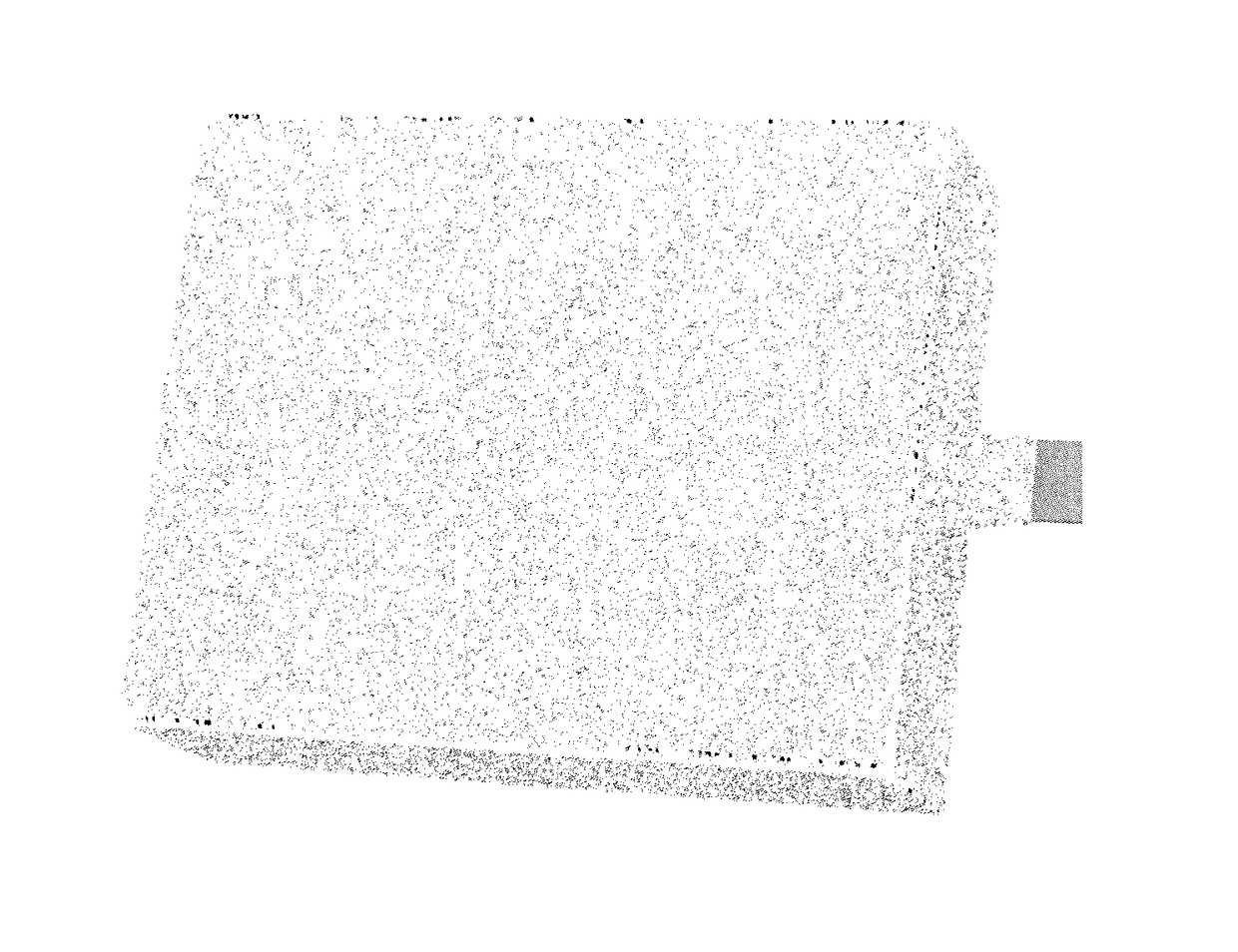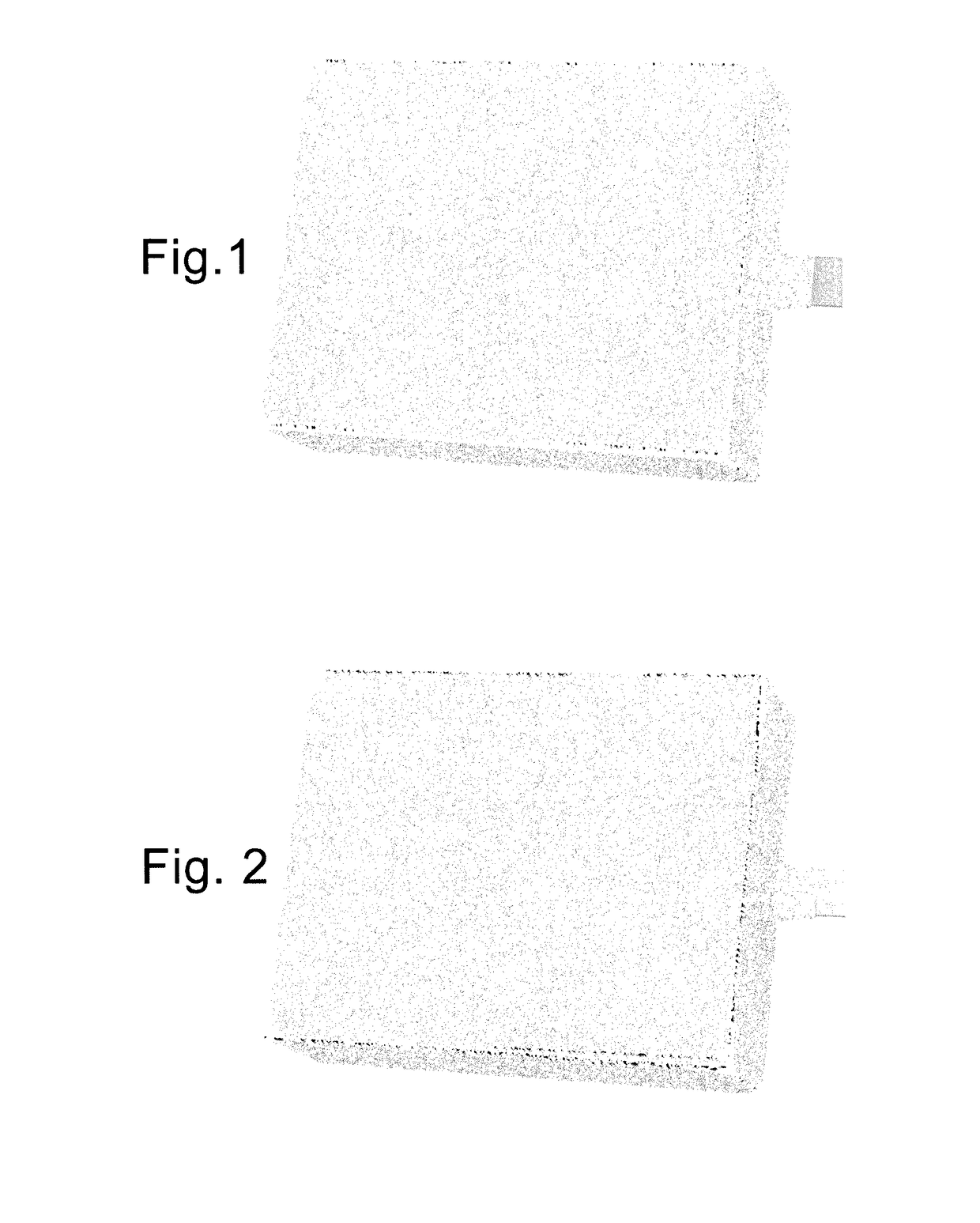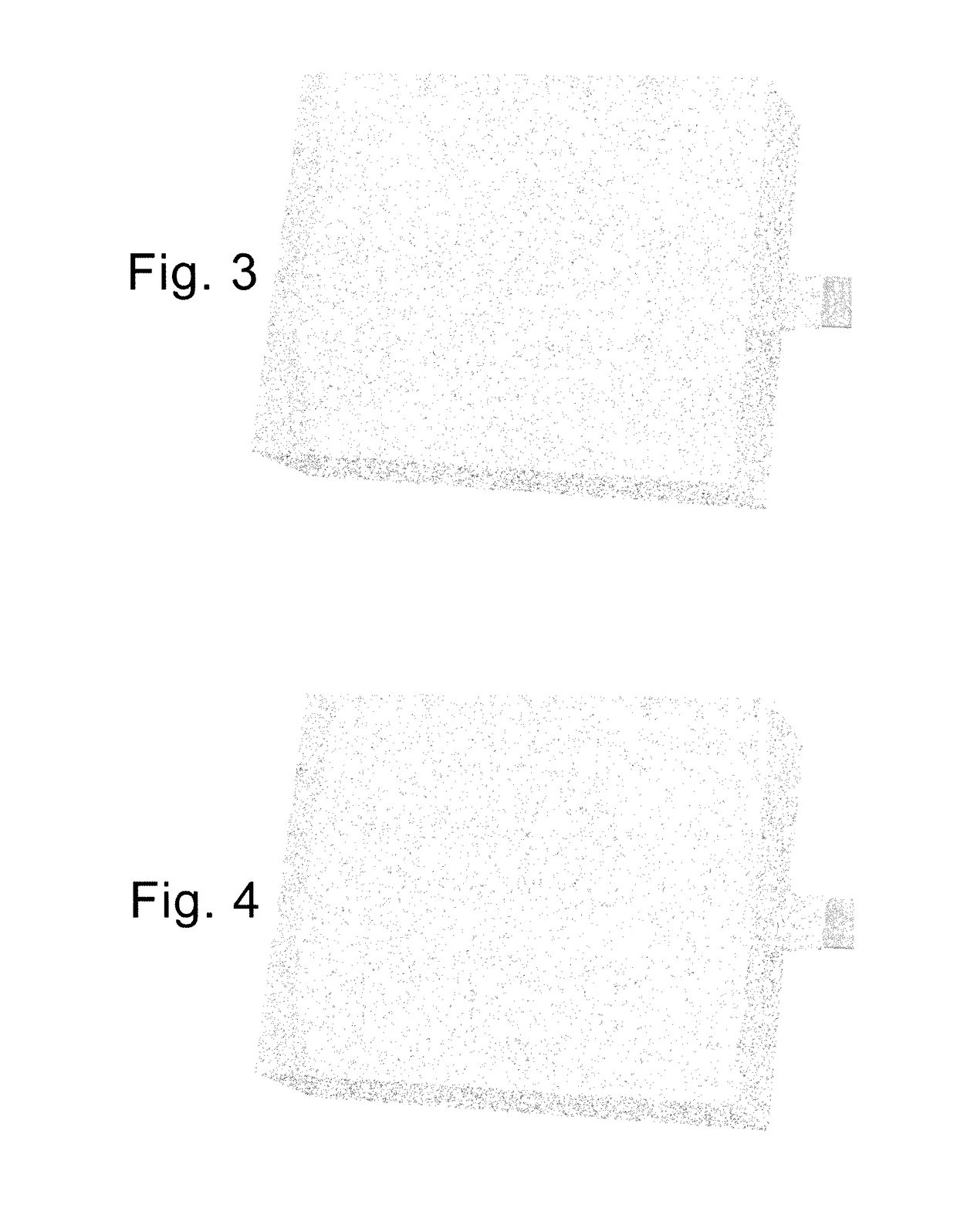Conductive Polymer Dispersion with Enhanced Coverage
- Summary
- Abstract
- Description
- Claims
- Application Information
AI Technical Summary
Benefits of technology
Problems solved by technology
Method used
Image
Examples
##ventive example 1
Inventive Example 1
[0058]A series of D case 33 μF, 35V tantalum anodes were prepared. A thin coating of conductive polymer (PEDOT) was applied onto the anodes via an in-situ chemical polymerization process. The anodes were first coated with a conductive polymer dispersion. A conducting polymer dispersion comprising amine compounds was prepared. After drying a conductive polymer dispersion comprising amine compounds was applied over the first conducting polymer dispersion. The conductive polymer dispersion comprising amine compounds was applied 3 more times followed by curing. The cured parts were analyzed by SEM for polymer coverage and a percentage coverage was obtained. Representations of the SEM images are provided in FIGS. 5 and 6. Graphite and Ag coatings were applied and the samples electrical properties were analyzed. The coverage and electrical properties are recorded in Table 1.
TABLE 1Comparison of bias HAST ESR shift for prior art and inventiveExamplesPolymer CoverageESR (...
##ventive example 2
Inventive Example 2
[0060]A series of D case 33 μF, 35V tantalum anodes would be prepared. A thin coating of conductive polymer (PEDOT) would be applied onto the anodes via an in-situ chemical polymerization process. The anodes would be first coated with a conductive polymer dispersion. A conducting polymer dispersion comprising amine compounds would be prepared. After drying a conductive polymer dispersion comprising amine compounds would be applied over the first conducting polymer dispersion. After drying alternate layers of first dispersion and second dispersion comprising amine compound would be applied and repeated 5 times. Graphite and Ag coatings would be applied and the samples electrical properties would be analyzed.
##ventive example 3
Inventive Example 3
[0061]A series of D case 33 μF, 35V tantalum anodes would be prepared. A thin coating of conductive polymer (PEDOT) would be applied onto the anodes via an in-situ chemical polymerization process. The anodes would be first coated with a conductive polymer dispersion with polyanion to conducting polymer ratio of 3.3. A conducting polymer dispersion with polyanion to conducting polymer ratio of 2.7 comprising amine compounds would be prepared. After drying a conductive polymer dispersion comprising amine compounds would be applied over the first conducting polymer dispersion. After drying alternate layers of first dispersion and second dispersion comprising amine compound would be applied and repeated 5 times followed by curing. Graphite and Ag coatings would be applied and the samples electrical properties would be analyzed.
PUM
| Property | Measurement | Unit |
|---|---|---|
| Fraction | aaaaa | aaaaa |
| Fraction | aaaaa | aaaaa |
| Fraction | aaaaa | aaaaa |
Abstract
Description
Claims
Application Information
 Login to View More
Login to View More - R&D
- Intellectual Property
- Life Sciences
- Materials
- Tech Scout
- Unparalleled Data Quality
- Higher Quality Content
- 60% Fewer Hallucinations
Browse by: Latest US Patents, China's latest patents, Technical Efficacy Thesaurus, Application Domain, Technology Topic, Popular Technical Reports.
© 2025 PatSnap. All rights reserved.Legal|Privacy policy|Modern Slavery Act Transparency Statement|Sitemap|About US| Contact US: help@patsnap.com



